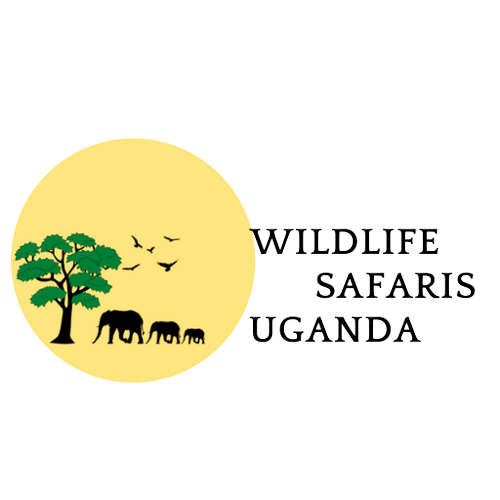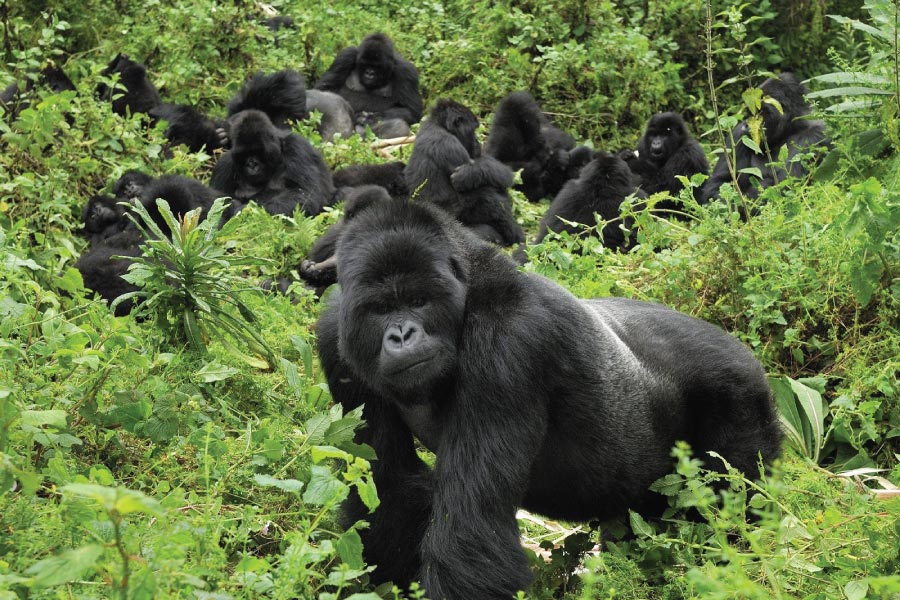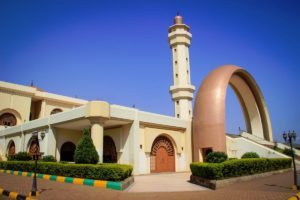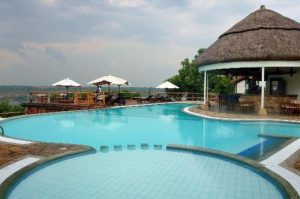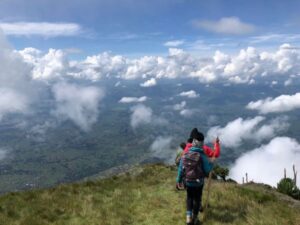Did you know Rwanda is one of the world’s most exhilarating adventure destinations? We are confident that any explorer, traveler, or adventurer who reads this will be intrigued to learn about the incredibly outstanding tourist attractions in Rwanda that may inspire them to plan their next adventure here. Gorilla trekking is a popular tourist activity among visitors to Rwanda and is usually at the top of their list of things to do there. Travelers from all over the world are enthralled by the mystery of getting up close to animals that share 99 percent of our DNA, and Rwanda is the ideal location to do it. To safeguard the creatures, the nation has made significant conservation progress.
Rwanda has a lot to offer, but the opportunity to witness these gentle giants is what Rwanda is known for the most. The 1994 Rwandan genocide left the nation in ruins, but it has recovered remarkably well in recent years to become a serene travel destination with lots to do. Nature enthusiasts can go on wildlife safari in Akagera National Park and take a canopy walk to obtain a bird’s-eye perspective of Nyungwe Forest National Park. If you’re interested in culture, visit Rwanda’s Ethnographic Museum to see the fascinating displays on local traditions and beliefs. The King’s Palace Museum’s royal cows (and the singers who sang to them) are not to be missed.
There are numerous tourist attractions/sites in Rwanda that you may visit, but because you can’t visit them all, here are the top sights and attractions that you shouldn’t miss seeing when you go on a safari trip of Rwanda. Use this list of the greatest tourist attractions to make the most of your trip to Rwanda.
Volcanoes National Park
The best thing to do in Rwanda is unquestionably go gorilla trekking in Volcanoes National Park. This national park in Rwanda, which shares a border with both Uganda and the Democratic Republic of the Congo, is home to an increasing number of critically endangered mountain gorillas.
Usually lasting four to eight hours, the walk involves traveling through mysterious bamboo forests, untamed meadows, and swampy terrain. One of the habituated gorilla families will eventually be reached with the help of national park staff guides. You’ll spend an hour watching the animals as they eat, look after their young, and engage in social interactions.
In Rwanda, going in search of gorillas is generally seen as a safe activity. Most gorillas are uninterested in the presence of humans. Visitors are protected from any risks by armed guides who communicate with the gorillas using a variety of clicking noises, making the experience unforgettable. In Volcanoes National Park, porters are available at the trailheads. It’s worthwhile to hire one for the day because they can carry your things and save you from slipping on the slick paths.
The International Karisoke Research Center of the Dian Fossey Gorilla Fund is located in the nearby town of Musanze and is the place to go if your safari excursion in the Volcanoes National Park didn’t go as planned or you didn’t have much fun. It is a compact but well-stocked museum dedicated to mountain gorillas and the work of Dian Fossey, a notable conservationist whose work on their behalf was highlighted in the 1988 play Gorillas in the Mist.
Kigali Genocide Memorial
It’s difficult to believe that less than two decades ago, Rwanda was experiencing a brutal genocide that claimed the lives of more than 800,000 people in just 100 days. Although the nation has made great strides since the horrifying tragedy, the legacy of this recent history will continue to affect present-day individuals and future generations.
The Kigali Genocide Memorial is a place where tourists can learn about this horrifying incident. The eerie museum explores the events that led up to the 1994 genocide and vividly depicts the horrors through galleries of images, artifacts, and data. The main exhibit hall is surrounded by somber sculptures and has stained-glass windows that illuminate the area with optimism.
Another permanent display at the museum covers the background of genocides worldwide and international community efforts to intervene, providing context for the genocide in Rwanda. The museum also features an emotive children’s room honoring the youngest genocide victims. It preserves their memory by featuring oversized photographs of the kids, some of whom were only infants at the time of their deaths, as well as individual information about the victims, such as their nicknames and favorite books.
Being a responsible tourist in Rwanda requires, despite its tragic nature, visiting the Kigali Genocide Memorial. In the Gardens of Reflection at the memorial, take some time to reflect on the experience and observe a moment of silence for the 250,000 victims buried here.
Nyungwe Forest National Park
In addition to 1,068 plant species, 322 bird species, and 75 different types of mammals, Nyungwe Forest National Park is one of the most significant forest conservation areas in all of Africa. The majority of visitors to this rainforest come to observe the chimpanzees, whom park rangers have trained to become used to people. Although less expensive than going gorilla trekking, this wildlife encounter is just as remarkable.
There are more activities besides hanging out with primates in Nyungwe forest National Park. The largest canopy walk in East Africa is also located in the park; it is about a 90-minute hike from the Uwinka Visitor Center. Walking across a 91-meter-long suspension bridge that hangs more than 50 meters above the lush jungle will give you an incredible view of the distant mountains and treetops.
King’s Palace Museum
If Rwandans’ fervent conservation efforts aren’t enough to persuade you of their love for animals, a trip to the King’s Palace Museum would. The Inyambo (holy cows) and their obscenely huge horns are the museum’s main draw. It is one of Rwanda’s eight national museums. A custom peculiar to Rwanda involves traditional singers soothing the cows throughout the day by shouting out poems.
The museum itself is just as fascinating as the animals on four legs in the back. It displays a recreation of a 15th-century king’s palace with a thatched roof, a royal hut, and a fresh milk hut that is often managed by an unmarried lady.
The colonial-style residence that served as King Mutara III Rudahigwa’s palace in the middle of the 20th century is also open to visitors. The interior decor is very remarkable, fusing Rwandan motifs with furniture in the European style (some of which was actually owned by the king).
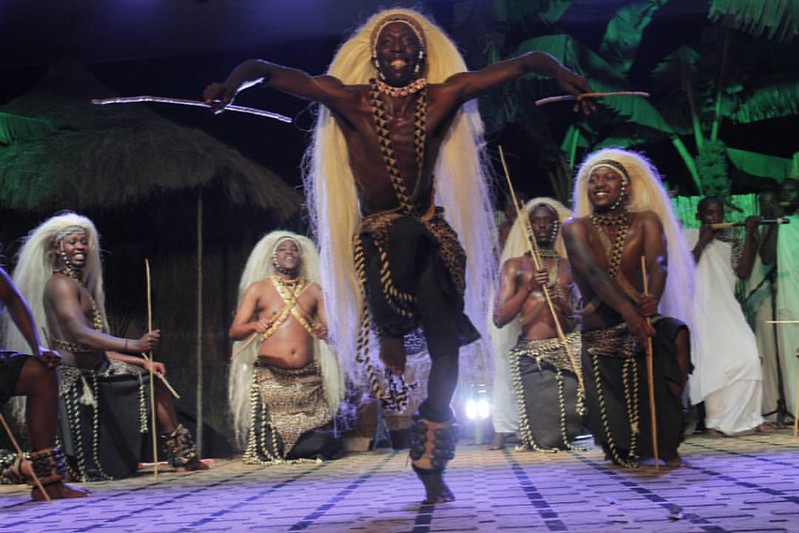
Akagera National Park
An African vacation would be incomplete without a game drive in one of the National park home to different wildlife. Within two and a half hours of Kigali, visitors can satisfy their desire to go on wildlife safari at Akagera National Park. The wildlife of Akagera, which is under the management of the African Parks organization, has miraculously recovered from near extinction following the genocide in Rwanda. All of the Big Five mammals are currently present in the 1,140-square-kilometer area, which is one of Central Africa’s largest protected wetlands. There are also numerous birds and antelope.
Since conservationists are currently attempting to increase their numbers, there aren’t many lions or rhinos at Akagera right now, so you’ll need to be extremely lucky to see one. On a self-drive safari, though, you won’t have any trouble spotting giraffes, elephants, hippos, Nile crocodiles, or zebras. Both the wildlife and the surrounding are magnificent, you’ll witness a beautiful change in the landscape as wetlands and lakes replace the savannah plains. Select a guide from the helpful staff at the park’s visitor center. They are aware of secret locations where the animals can be found.
Kigali Province, Kigali City
As the cleanest city in Africa, Kigali City has quickly developed into a lively and exciting city with a blend of tradition and modernity, offering a variety of markets to explore, art galleries, museums, and memorial centers, as well as fascinating places to keep you out of your hotel room boredom before or after your wildlife safari and big five safari in Akagera National Park. While taking a few days off to enjoy the various cultures, delectable foods, and interesting scenery that Rwanda’s capital city has to offer, explore this exciting yet serene city.
Visit Kimironko Market, the largest market with everything you could possibly need around every corner, to see custom-made fabrics made from swirling patterned textiles; take in the vibrant atmosphere as you talk with local vendors about how they conduct their daily business; and engage in some price haggling. If you’re interested in artifacts, there are many art and craft stores you can visit, like the Inema Arts Center and Rwanda Art Museum at the former Presidential Palace, where you can find imaginative works of local art made by local artists and also see the wreckage of the president’s aircraft that crashed there in 1994.
Even though Kigali is a small city, it has a lot to offer, including its lovely green scenery, which you can see by taking a short one-hour hike to Mount Kigali’s summit and then meandering around Nyamirambo or visiting Nyamirambo Women’s Center to gain an understanding of the traditional view of Rwandans with distinct tastes and preferences.
“Don’t skip visiting Rwanda because of its small size because it has more attractions than those listed above that could make your safari experience more fascinating than you expected. In Rwanda, there is something for everyone. Rwanda is the perfect choice for your next African safari vacation, whether you’re seeking romantic honeymoon attractions and activities, a private area to be alone, or an exciting and spectacular site for your family and friends.
